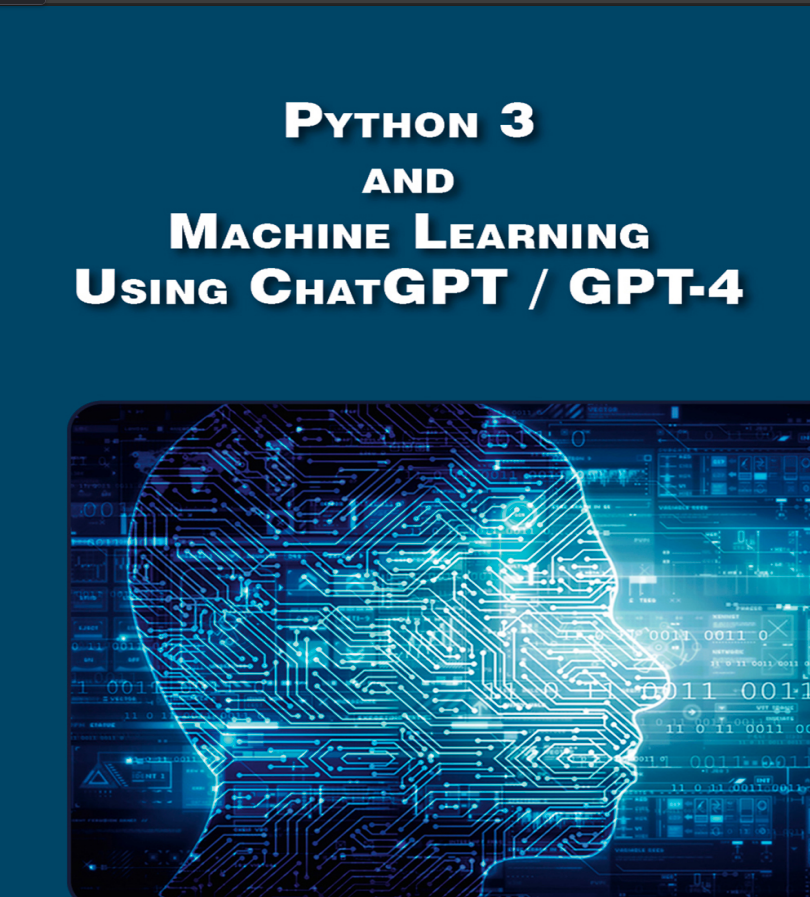TechMart
Python 3 and Machine Learning Using ChatGPT/GPT-4 – Bridging Worlds
Python 3 and Machine Learning Using ChatGPT/GPT-4 – Bridging Worlds
Couldn't load pickup availability
- Publisher : Mercury Learning and Information; 1st edition
- Language : English
- Perfect Paperback : 268 pages
- ISBN-10 : 1501522957
- ISBN-13 : 978-1501522956
This is precisely the gap that the hypothetical, yet highly relevant, book “Python 3 and Machine Learning Using ChatGPT/GPT-4” aims to fill. It positions itself not just as another Python ML guide, nor solely as an LLM interaction manual, but as a practical handbook for leveraging the unique capabilities of cutting-edge LLMs within the established Python machine learning ecosystem.
1What’s Inside? A Glimpse into the Synergy
Assuming this book delivers on its title, we’d expect it to cover a fascinating blend of topics:
-
Foundations Revisited: A refresher on core Python 3 concepts essential for ML (data structures, control flow) and key libraries like NumPy, Pandas, and Matplotlib/Seaborn. It would likely also touch upon Scikit-learn for traditional ML tasks.
-
Understanding ChatGPT/GPT-4: An introduction to the architecture (at a high level), capabilities, limitations, and the all-important concept of prompt engineering specifically tailored for ML contexts. This section would cover API access, token management, and cost considerations.
-
LLMs as ML Development Assistants: This is where the book would truly shine. Expect chapters on:
-
Code Generation & Debugging: Using ChatGPT/GPT-4 to write boilerplate Python code for data loading, preprocessing, model training loops, and visualization. Debugging tricky ML code snippets with AI assistance.
-
Concept Explanation: Leveraging LLMs to explain complex machine learning algorithms, statistical concepts, or library functions in plain English.
-
Data Exploration & Feature Engineering: Brainstorming feature ideas, generating Python code for EDA based on descriptions, and even getting suggestions for handling missing data or outliers.
-
Documentation & Reporting: Using LLMs to help generate docstrings, comments, and summaries of ML experiments or results.
-
-
Direct LLM Application in ML Tasks: Moving beyond assistance to direct integration:
-
NLP Tasks: Using GPT-4 directly for tasks like text classification, summarization, translation, and sentiment analysis, potentially comparing its zero-shot/few-shot performance against fine-tuned traditional models.
-
Data Augmentation: Generating synthetic text data for training smaller, more specialized models.
-
Weak Supervision: Employing LLMs to generate initial labels for datasets, speeding up the annotation process.
-
Model Interpretability: Using LLMs to help translate complex model explanations (like SHAP values or feature importance) into more understandable narratives.
-
-
Integration Strategies: How to call the OpenAI API from within Python scripts, integrate LLM outputs into Pandas DataFrames, and potentially build simple ML applications (e.g., using Flask/Streamlit) that incorporate LLM features.
-
Best Practices & Ethical Considerations: Discussing the reliability of LLM-generated code/explanations, prompt injection risks, data privacy when sending information to APIs, bias in LLMs, and responsible AI development.
Share

